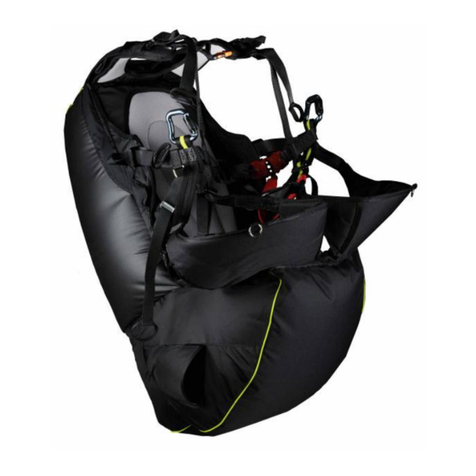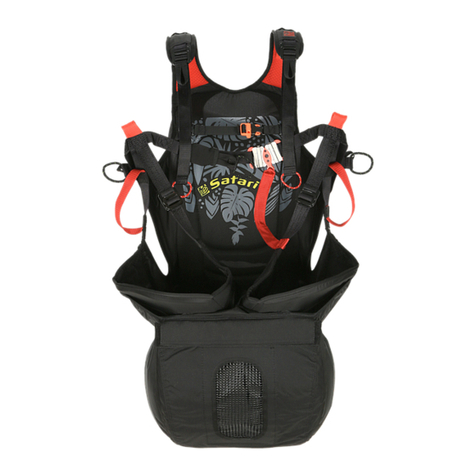Yeti UL front container manual: 8
Liability, warranty exclusion and operating limitations
Use of the Yeti UL front container is at the pilot’s own risk! Any current paraglider or
harness was tested according to EN or CCC. This container is made for rescues that are
hand-deployed reserve parachutes for paraglider pilots to be used in an emergency
situation while flying.
Pilots are responsible for their own safety and must ensure that the airworthiness of their
paragliding equipment, which includes also the Yeti UL front container and everything
should be checked prior to every flight. The pilot should launch only if the paraglider is
airworthy. In addition, pilots must observe the relevant regulations in each country.
The glider may only be used if the pilot has a licence which is valid for the area or is flying
under the supervision of an approved flying instructor. There shall be no liability on the
part of third parties, in particular the manufacturer and the dealer.
ATTENTION: Maximum speed for usage for paragliding rescues is: 32 m/s (115 km/h)
CAUTION: Paragliding rescues have a repacking interval of 6 months. Each time the rescue is
repacked it should be inspected for damage, the effect of water, sand, salt or other
environmental influences may reduce the repack / inspection interval.
Liability and warranty exclusion
In terms of the warranty and guarantee conditions, the Yeti UL front container may not be
flown if any of the following situations exists:
●the pilot has incorrect or inadequate equipment (reserve, protection, helmet etc)
●the pilot has insufficient experience or training
Operating limitations
The Yeti UL front container must be operated only within the operating limits. These are
exceeded, if one or more of the following points apply:
●the glider is flown in rain or drizzle, cloud, fog and / or snow
●the container and rescue parachute is wet
●there are turbulent weather conditions or wind speeds on launch higher than 2/3
the maximum flyable airspeed of the glider (varies according to the total take-off
weight)
●air temperature below -10°C and above 50°C





























